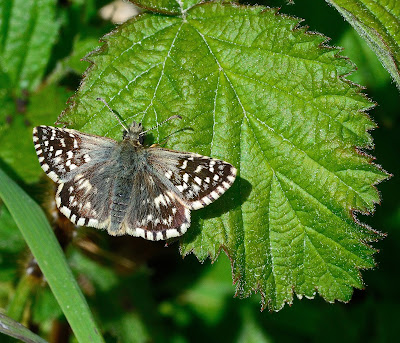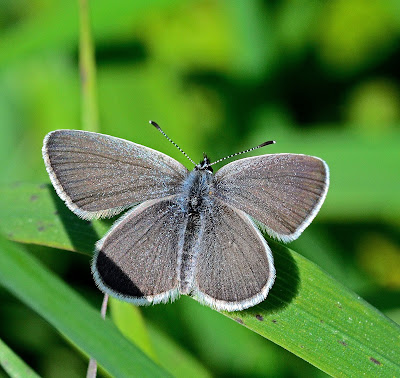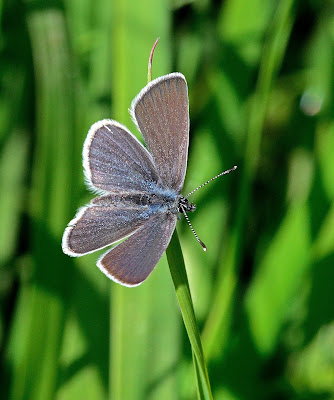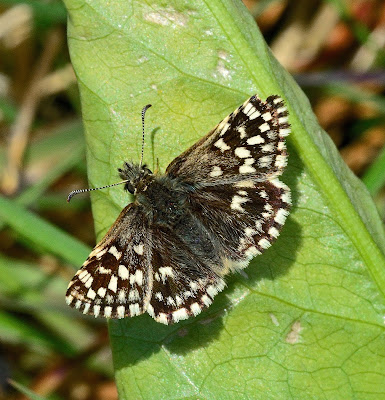With settled and warm weather a definite prospect for the next few days the season is well under way.Today the pyracantha bush in the garden looked magnificent as a deluge of flowers began to open.This attracted my first Painted Lady of the year,a very pristine individual.Despite my attention it returned several times to take advantage of the blooms and that glimpse of orange and red on the underside plus the gold and blue of the underside rings was an enjoyable treat.
Yesterday while on the cliffs and landslip of our southwest coast I came across a Small Copper sporting several blue iridescent pear shaped spots on the hind wings.This is the aberration caeruleopunctata,not an uncommon form but it can vary from having one or two faint spots through to five clearly defined pear-shaped marking on each hind wing.































